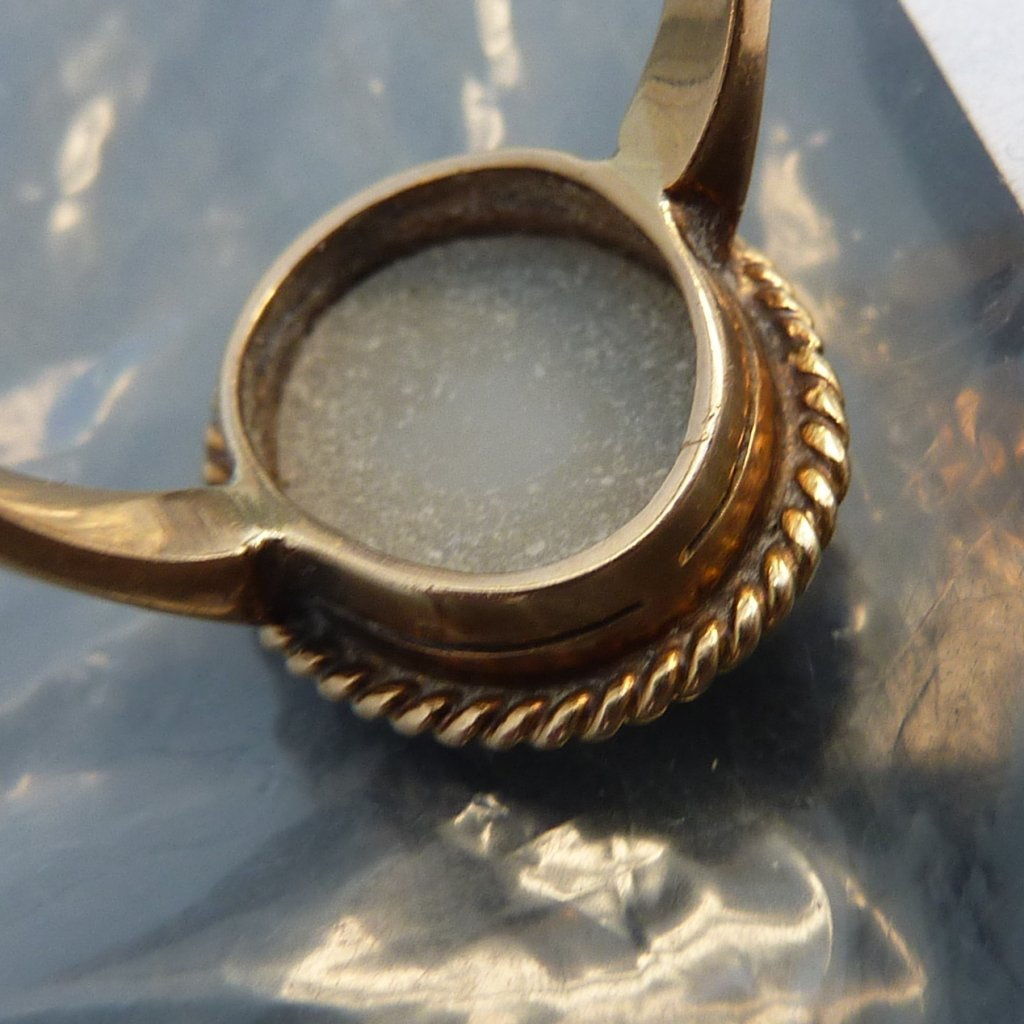- Joined
- Dec 29, 2017
- Messages
- 4
- Reaction score
- 3
Hello good people.
I've a ring that I bought which has a very pretty stone in it, but can't confirm in my own mind that it is what I think it is, a black opal.
I thought where better to get advice than the home of the Black Opal, 'Straya
I've done a fair amount of research and got some good information from watching videos of the good people at Black Opal Direct, and I've learned a few new words like potch, but I'm still not entirely sure.
I've included a few pictures of the stone, and there are other characteristics of it that the pictures may not pick up:
The flat part at the back of the stone is a pale grey (you could say dove grey) colour and in texture and resembles ice on a shallow puddle that some one has scattered grit over. Smooth here, frosty-looking there, and in places a build up of a sandy looking substance. Or sand.
I shined a torch light from my mobile phone directly on to this dove grey patch (or is it potch?) and there was no light that passed through to the face of the stone
When looked at under a loupe, the domed part of the stone has a few scratches and a very fine pit or two.
The ring itself is probably antique, maybe somewhere around the art deco period
It's probably impossible to tell from a picture, but if any one has any thoughts please let me know
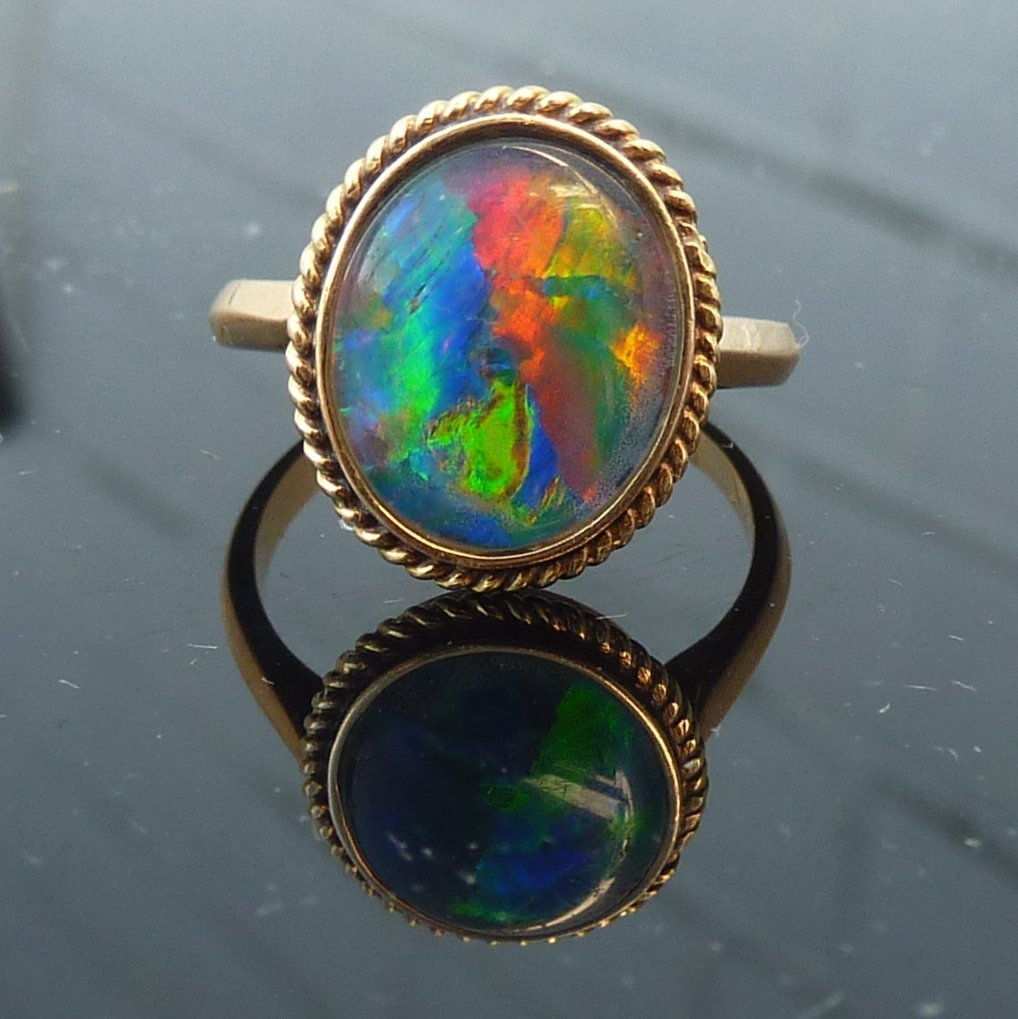
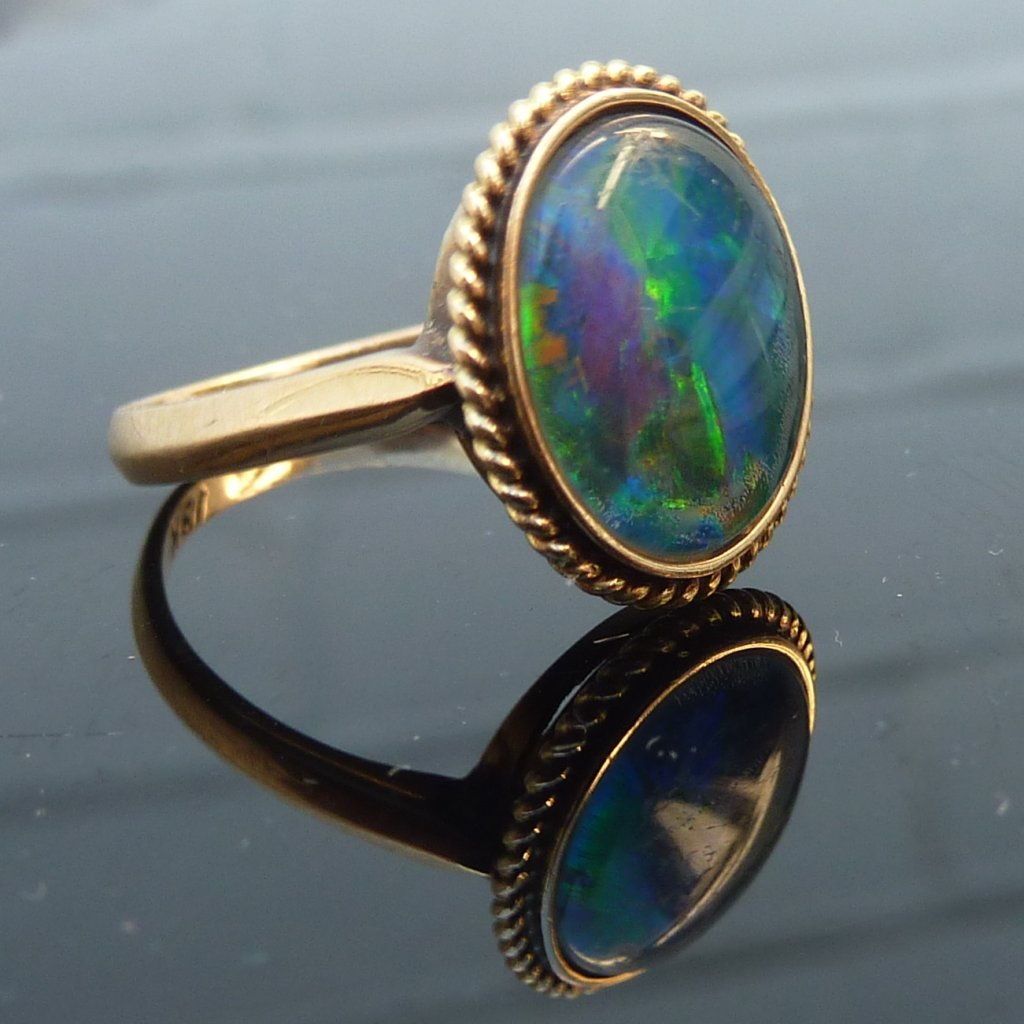
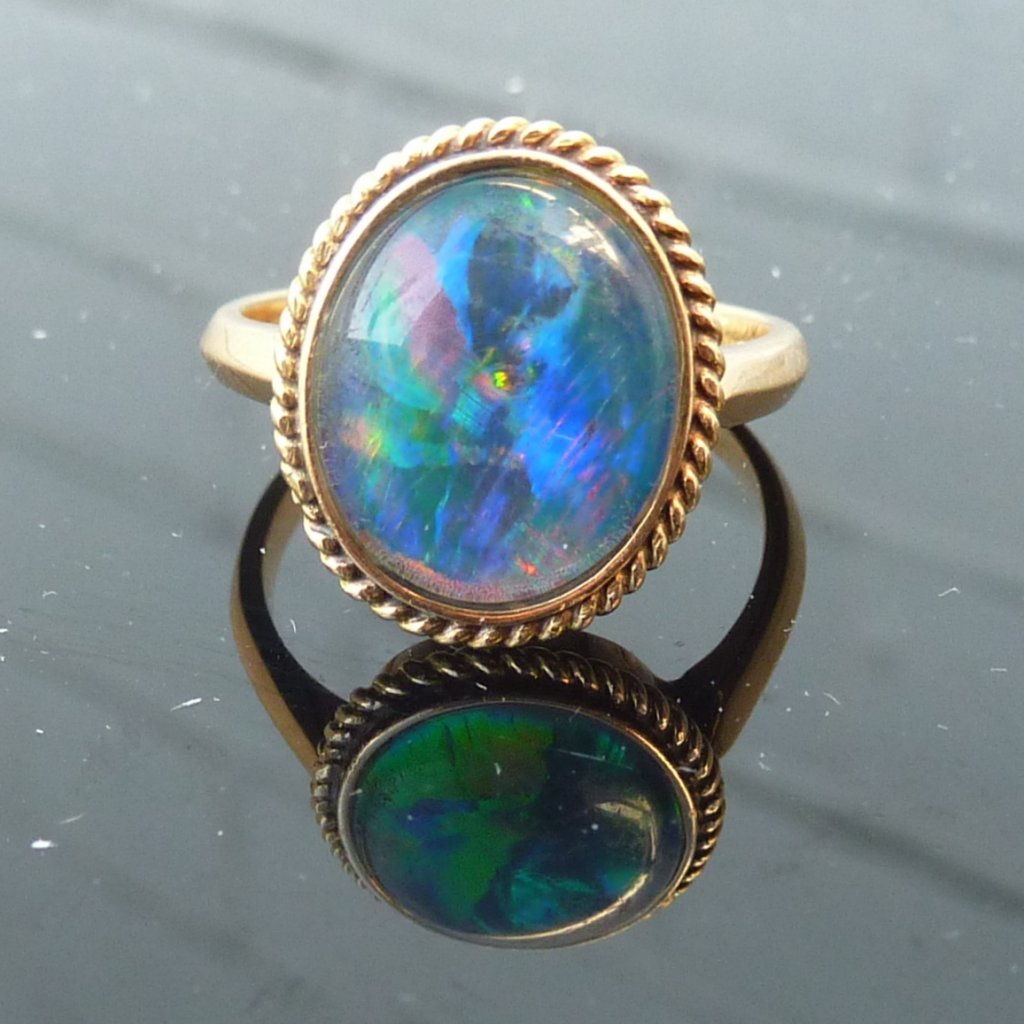
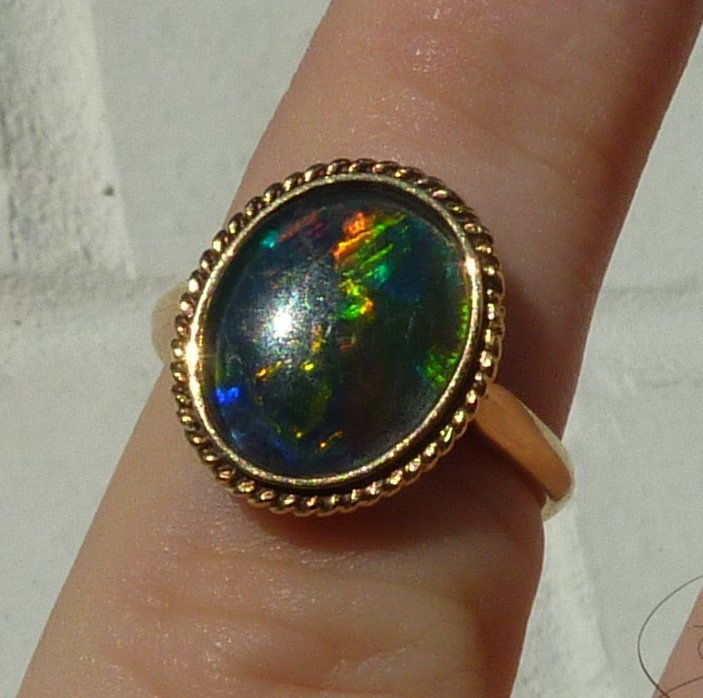
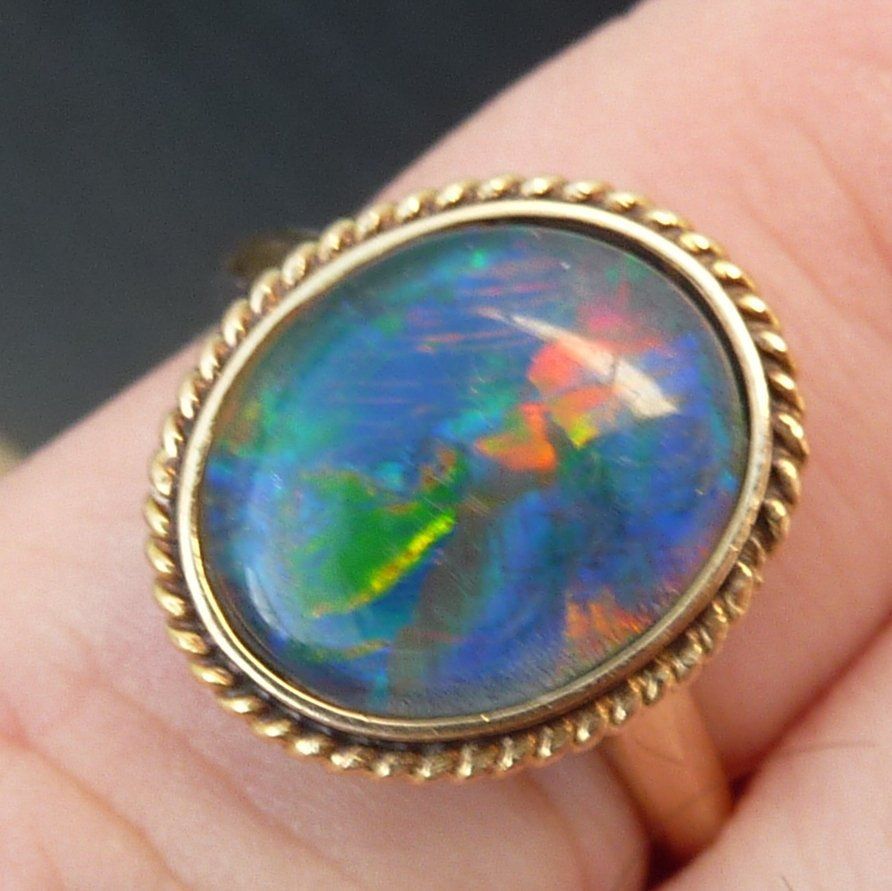
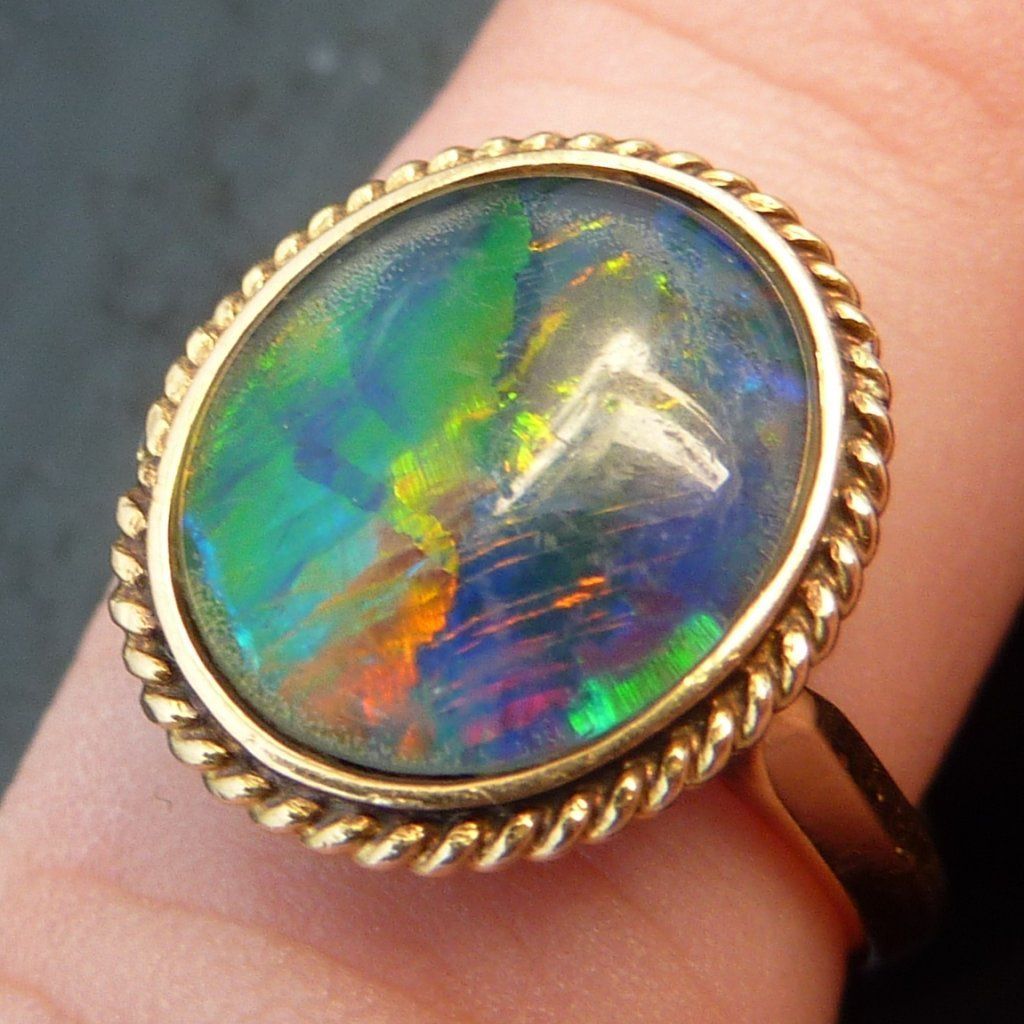
Yours respectfully,
WhingingPom
P.S. Congrats on the Ashes (Whinge Whinge Whinge)
I've a ring that I bought which has a very pretty stone in it, but can't confirm in my own mind that it is what I think it is, a black opal.
I thought where better to get advice than the home of the Black Opal, 'Straya
I've done a fair amount of research and got some good information from watching videos of the good people at Black Opal Direct, and I've learned a few new words like potch, but I'm still not entirely sure.
I've included a few pictures of the stone, and there are other characteristics of it that the pictures may not pick up:
The flat part at the back of the stone is a pale grey (you could say dove grey) colour and in texture and resembles ice on a shallow puddle that some one has scattered grit over. Smooth here, frosty-looking there, and in places a build up of a sandy looking substance. Or sand.
I shined a torch light from my mobile phone directly on to this dove grey patch (or is it potch?) and there was no light that passed through to the face of the stone
When looked at under a loupe, the domed part of the stone has a few scratches and a very fine pit or two.
The ring itself is probably antique, maybe somewhere around the art deco period
It's probably impossible to tell from a picture, but if any one has any thoughts please let me know






Yours respectfully,
WhingingPom
P.S. Congrats on the Ashes (Whinge Whinge Whinge)




